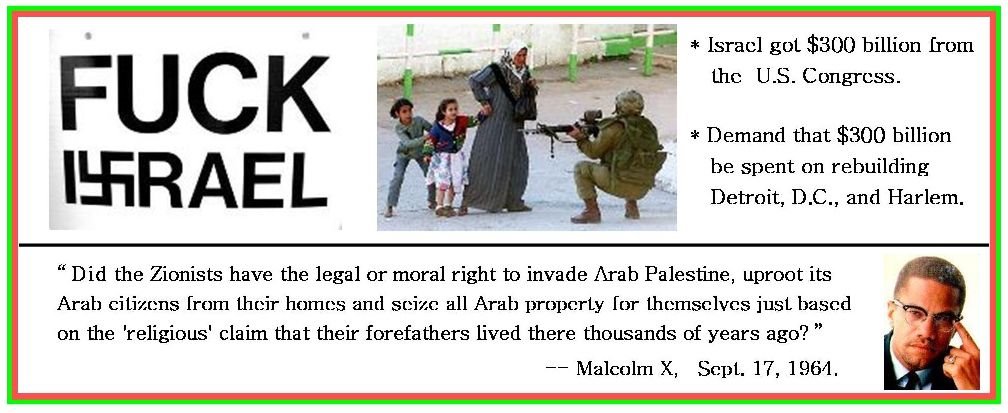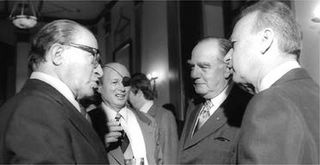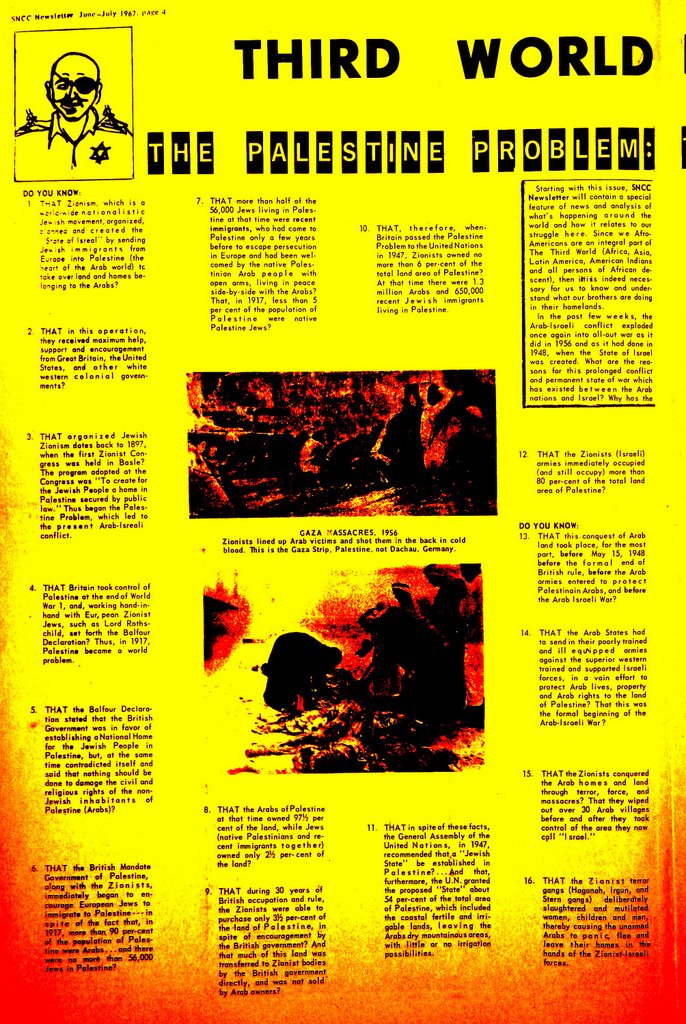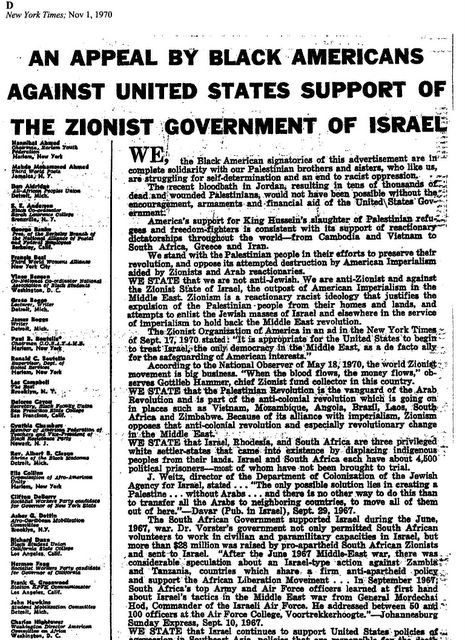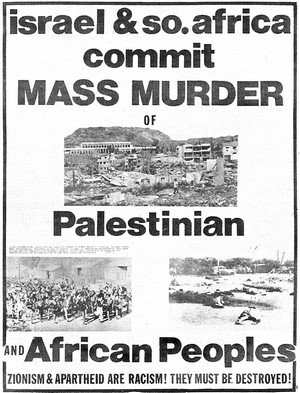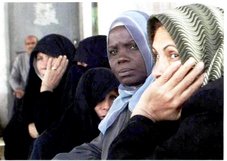"How US Foreign Policy over decades was influenced by the Diamond Cartel:
"Maurice Tempelsman: The Convergence of Policy and Profit in Private"
On the Web at:
http://www.minesandcommunities.org/Company/diamonds1.htm
Excerpt from statements which were introduced by U.S. Congresswoman Cynthia McKinney, on April 16, 2001:
The Secret Story Behind Blood Diamonds
Statement by Janine Farrell Roberts
[The author of "Blood Stained Diamonds"]:
I have been asked to talk about Tempelsman's role in the confluence of public policy and private profit that happens in private. He is an excellent example. I have time only to summarise my findings.
Why was he uniquely important in the De Beers? In the 1940s De Beers was indicted by the US Justice Department for price fixing under the Sherman Act. The US also believed De Beers had rationed the supply of tool diamonds to the US during the Second World War severely damaging the war effort. It was determined never to let this happen again, and legislation was thus passed to set up a national diamond stockpile. De Beers needed a way to ensure it was the source of this stockpile despite being indicted. It sought a middleman to do the deals with the US. Early in the 1950s Tempelsman met with the Oppenheimers who rule De Beers and became this middleman. He was uniquely supplied with millions of diamonds to sell the US as its strategic reserve. Most of these diamonds came from the Congo.
The Congo
When Lumumba, Congo's first elected leader, spoke of using the Congo's resources to benefit the Congo. De Beers feared it would lose access to the one third of world's diamond supply in the Congo - as would also Tempelsman. Shortly after this, the CIA facilitated Lumumba's assassination. Evidence on this came before the Church Intelligence Commission. Immediately after Lumumba's death, the Acting Prime Minister of the Congo, Adoula announced support for a very major Tempelsman diamond deal, telegramming this to President Kennedy. The historian Richard Mahoney claimed that the Adoula regime was receiving funds from Tempelsman.
A State Department memo, headed "Congo Diamond Deal", stated:
"The State Department has concluded that it is in the political interest of the US to implement this proposal." (2 August 1961) Immediately after Mobutu came to power, Tempelsman became an even bigger player in the Congo - recruiting his own staff from those CIA staffers that Mobutu most favored that put him in power. Mobutu also at this time gave Tempelsman, as a "Christmas Gift", rich mineral reserves.
According to Tempelsman's staff we interviewed, they had a wonderful time helping to run the Congo. One of the first acts by Tempelsman was to facilitate the return of the Oppenheimers to the Congo - and to secure funding for Mobutu. He succeeded in persuading the White House to secretly buy a vast number of diamonds for the US strategic reserve - at a time when Administration officials were protesting that the reserve was over full. The reason for this deal given in secret US government memos was to support Mobutu and his partner Adoula. This Tempelsman plan made much profit for him and for De Beers.
A State Department Cable of 23 December 1964 warned about the need of secrecy over this Mobutu diamond and South African uranium deal because;"it could outrage the moderate Africans we are trying to calm down." It suggested South African Foreign Minister Muller would understand the need for secrecy since the US was "doing a job" in the Congo that South Africa could not do. This covert support for Mobutu gave the US a gross excess in the strategic diamond stockpile that was still being sold off in 1997.
In 1967 the State Department reported; "Tempelsman is playing an increasingly central role as GDRC (Congo's) technical advisor and mediator." But these deals and other deals done throughout the following decades with a corrupt Mobutu government left the Congolese people in absolute poverty.
Ghana In the late 1950s democracy arrived in Africa with the election of President Nkrumah - who thought Black Africans should not have to sell diamonds to an apartheid company - so took Ghana's diamonds from the cartel. A short while later, the State Department wrote a furious letter to Maurice Tempelsman saying that his office, by using an unguarded phone line, had betrayed the identity of the plotters against Nkrumah and the identity of the CIA Head of Station. The plotters seemingly were communicating to the White House via Tempelsman's office. (Memorandum for the President from WW Rostow, 24 September 1961) Tempelsman clearly had advanced knowledge of this coup attempt. Shortly afterwards President Kennedy decided not to "downgrade" (his word) Tempelsman for this error.
Sierra Leone Tempelsman worked out a new diamond contract for President Stevens - under which Tempelsman got 27% of the country's diamonds - setting up an independent cutting factory - and De Beers bought shares in it. However it was not set up to compete effectively. I have gathered ample evidence that historically Sierra Leone has been grossly exploited by fraudulent De Beers' practices which I would be happy to give during question time.
Angola In recent years Tempelsman has been trying to use US money and support to set up Savimbi of UNITA in the diamond trade with both De Beers the US support. On the side, he has also been setting up his own diamond cutting factory - here as in his other African cutting plants on terms that are likely to stop Africa getting a fully commercial cutting industry - a De Beers aim.
Tempelsman in 1996 persuaded the Assistant Secretary of State George E Moose to give him a letter suggesting that the US would finance Tempelsman's plans. On October 10th 1996 he met with Tony Lake the National Security Advisor and with Lake's deputy, Shawn McCormick - and gained their support for Tempelsman's plans. In May 1997 the US Ambassador for Angola, Steinbach met with Savimbi - to back the Tempelsman plan. This plan included UNITA keeping its diamond mines - and selling them via De Beers. Again US foreign policy was being shaped to benefit De Beers.
__________________________________________________
